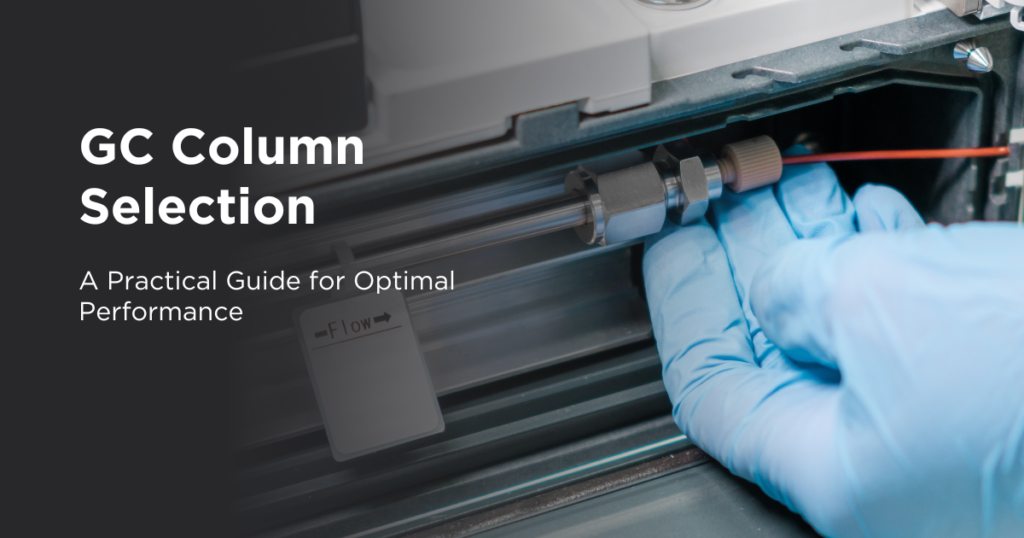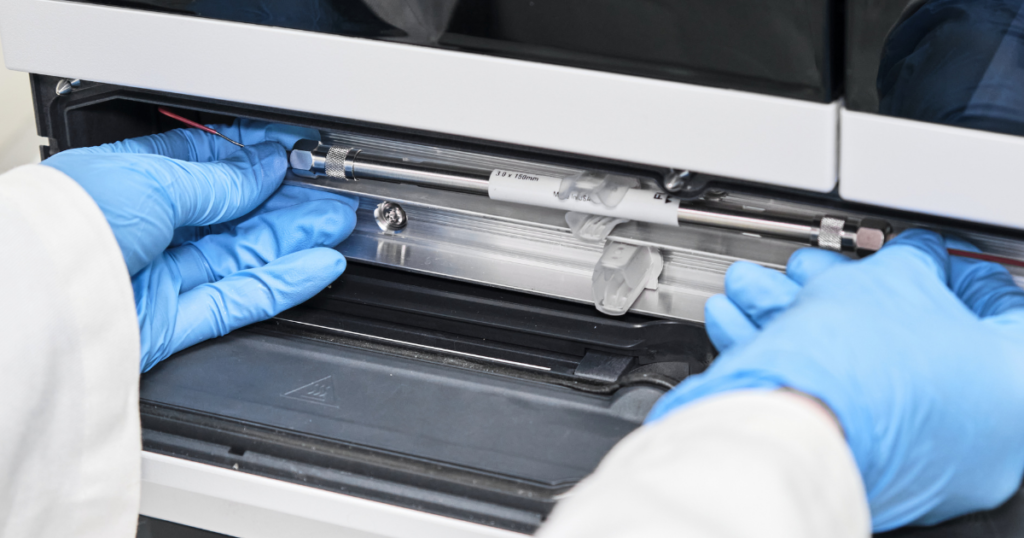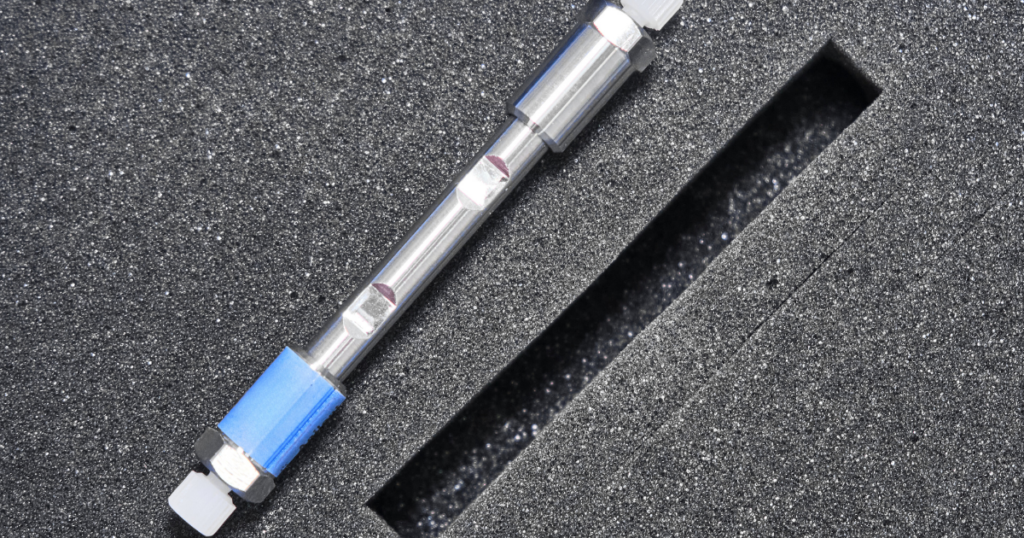
Gas chromatography (GC) is a versatile and widely used analytical technique for separating and analysing volatile compounds. The heart of GC is the GC column, a crucial component that plays a pivotal role in determining the separation of analytes and the overall performance of the chromatographic system. Selecting the right GC column is essential for achieving accurate, reliable, and efficient analyses. This comprehensive guide delves into the intricacies of GC column selection, providing a step-by-step approach to making informed decisions that optimise the performance of your GC system.
Understanding GC Column Parameters
Before embarking on the GC column selection process, it is essential to grasp the fundamental parameters that characterise these columns. These parameters, which influence the performance of the GC system, include:
- Stationary Phase: The stationary phase is the coating that lines the inside of the GC column, acting as a stationary platform for the interaction with analytes. The choice of stationary phase significantly impacts the separation of analytes, as the polarity of the stationary phase influences the retention time of each analyte. Non-polar stationary phases, such as polyethylene glycol (PEG) and polydimethylsiloxane (PDMS), are suitable for non-polar analytes, while polar stationary phases, such as polyethylene oxide (PEO) and carbowax, are better suited for polar analytes.
- Column Diameter (I.D.): The column diameter, also known as the internal diameter (I.D.), refers to the width of the inside of the GC column. It plays a critical role in determining the sample volume capacity and the overall sensitivity of the analysis. Smaller diameter columns, typically ranging from 0.1 to 0.53 millimeters (mm), offer higher resolution and sensitivity due to the narrowness of the separation channel. However, they require lower sample volumes compared to larger diameter columns. Larger diameter columns, typically ranging from 0.75 to 2.0 mm, provide greater sample capacity but may compromise resolution and sensitivity.
- Film Thickness: The film thickness is the thickness of the stationary phase coating on the inside of the GC column. It significantly influences the retention time, peak width, and sample capacity of analytes. Thinner films, typically ranging from 0.1 to 0.25 micrometers (µm), provide faster separation and narrower peaks, resulting in improved resolution. However, they may limit sample capacity due to the reduced amount of stationary phase. Thicker films, typically ranging from 0.5 to 5.0 µm, offer better resolution and higher sample capacity but may result in broader peaks and longer separation times.
- Column Length: The column length refers to the physical length of the GC column, extending from the inlet to the outlet. It directly affects the retention time of analytes and the overall separation efficiency. Longer columns, typically ranging from 10 to 100 meters (m), provide better separation and resolution due to the extended interaction time between analytes and the stationary phase. However, they require longer analysis times. Shorter columns, typically ranging from 5 to 30 m, offer faster analysis but may compromise resolution and separation efficiency.

Factors Influencing GC Column Selection
The selection of the appropriate GC column is not a one-size-fits-all approach; it depends on several factors specific to the analytes and the desired analytical outcome. These factors include:
- Sample Composition: The nature of the analytes in the sample is a primary consideration when selecting a GC column. Analytes with similar polarity tend to elute from the column close together, making it challenging to distinguish them. For such samples, a column with high selectivity is required to achieve adequate separation.
- Desired Resolution: The desired resolution refers to the ability of the GC column to separate analytes with similar retention times. Higher resolution is achieved with longer columns and thinner films, as these conditions provide more separation points for analytes with similar properties.
- Analysis Speed: The desired analysis speed dictates the choice of column length and film thickness. Shorter columns with thicker films provide faster analysis but may compromise resolution. Conversely, longer columns with thinner films offer higher resolution but require longer analysis times.
- Sample Volume: The sample volume available for analysis influences the choice of column diameter. Smaller diameter columns require lower sample volumes but may limit sensitivity. Larger diameter columns can accommodate larger sample volumes but may compromise sensitivity due to the increased dilution of analytes.
- Sample Injection Technique: The sample injection technique, such as split or splitless injection, also affects column selection. Split injection reduces the sample size by diverting a portion of the sample before it enters the column, preventing column overload and improving peak shape. Splitless injection introduces the entire sample onto the column, maximizing sample sensitivity.
- Carrier Gas: The carrier gas, typically helium or hydrogen, plays a crucial role in transporting analytes through the GC column. The choice of carrier gas depends on the specific analytes and the desired separation performance. Helium is the most common carrier gas due to its inertness, high diffusivity, and low viscosity. Hydrogen offers faster analysis times but poses safety concerns due to its flammability.
- Temperature Programming: Temperature programming is a technique used to gradually increase the temperature of the GC oven during the analysis. This technique is particularly useful for separating analytes with a wide range of boiling points. By controlling the temperature ramp rate, analytes elute from the column at different times, enhancing separation and resolution.
- Detector Compatibility: The choice of GC detector also influences column selection. Different detectors have varying sensitivities and response characteristics to different analytes. For instance, flame ionisation detectors (FIDs) are highly sensitive to hydrocarbons, while mass spectrometers (MS) offer superior selectivity and the ability to identify and quantify individual analytes.

Steps in GC Column Selection
To make an informed decision about GC column selection, follow these steps:
- Define the Analytes: Identify the analytes of interest in the sample. Understanding their chemical properties, such as polarity and boiling point, is crucial for selecting an appropriate stationary phase.
- Consider the Desired Resolution: Assess the required level of separation between analytes. Higher resolution demands a column with longer length and thinner film thickness.
- Evaluate Analysis Speed Requirements: Determine the desired analysis time. Faster analysis can be achieved with shorter columns and thicker films, but may compromise resolution.
- Assess Sample Volume Availability: Consider the volume of sample available for analysis. Smaller diameter columns require lower sample volumes but may limit sensitivity.
- Choose an Appropriate Injection Technique: Select the appropriate injection technique, such as split or splitless injection, based on sample concentration and sensitivity requirements.
- Select a Compatible Carrier Gas: Choose the carrier gas, typically helium or hydrogen, that is compatible with the analytes and the desired separation performance.
- Determine Temperature Programming Requirements: Assess the need for temperature programming based on the range of boiling points of the analytes.
- Consider Detector Compatibility: Select a GC column that is compatible with the chosen detector to ensure optimal performance and sensitivity.

Additional Considerations
In addition to the fundamental parameters and selection steps, consider these additional factors when selecting a GC column:
- Column Cost: GC columns vary in price depending on their dimensions, stationary phase, and brand. Evaluate the cost-benefit ratio of different column options.
- Column Availability: Ensure the selected GC column is readily available from a reputable supplier to avoid delays in analysis.
- Laboratory Safety: Consider the safety implications of using certain stationary phases and carrier gases, particularly hydrogen.
- Method Validation: Once the GC column is selected, perform thorough method validation to ensure the accuracy, precision, and reproducibility of the analytical method.
Conclusion
GC column selection is a critical aspect of achieving optimal performance in gas chromatography. By carefully considering the factors discussed in this comprehensive guide, you can make informed decisions that lead to successful separation and analysis of your analytes. Remember, the ideal GC column is a balance between resolution, analysis speed, sample capacity, and compatibility with the specific analytes and instrumentation.

